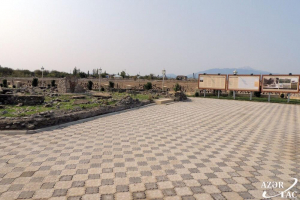


Humans have been performing cranial surgery and drilling holes in other people's skulls for a long time. The oldest example of this procedure, called trepanation, dates to 7,300 B.C., according to findings from a site at the village of Vasilyevka in Azerbaijan. That means cranial surgery was happening as long ago as the Mesolithic period.
Kanal24 informs citing CNN, now, for the first time, a definite example of cranial surgery has been found in an animal: specifically, a nearly complete cow's skull discovered at a Neolithic site that dates to 3,400 to 3,000 BC. The investigation of this skull is detailed in a study published Thursday in the journal Scientific reports.
Trepanation has been found in skulls from all over the world and usually involved drilling, cutting or scraping layers of bone to form a hole. These techniques were used to avoid being forceful and cause further damage or fracturing to the skull. As early as the Neolithic period, symptoms such as seizures, epilepsy, headaches and alterations in behavior were associated with the brain, which is why the holes are usually found in similar locations.
The cow's skull was found at the Stone Age site of Champ-Durand in France, just under 25 miles from the Atlantic coast. The settlement was once an important trade center, specializing in salt production as well as cattle. Archaeological excavations were carried out there from 1975 to 1985, and bones of cows, pigs, sheep and goats have been found.
Cows have been a popular find in other Neolithic sites, and their bones make up about 54% of the uncovered animal remains.














